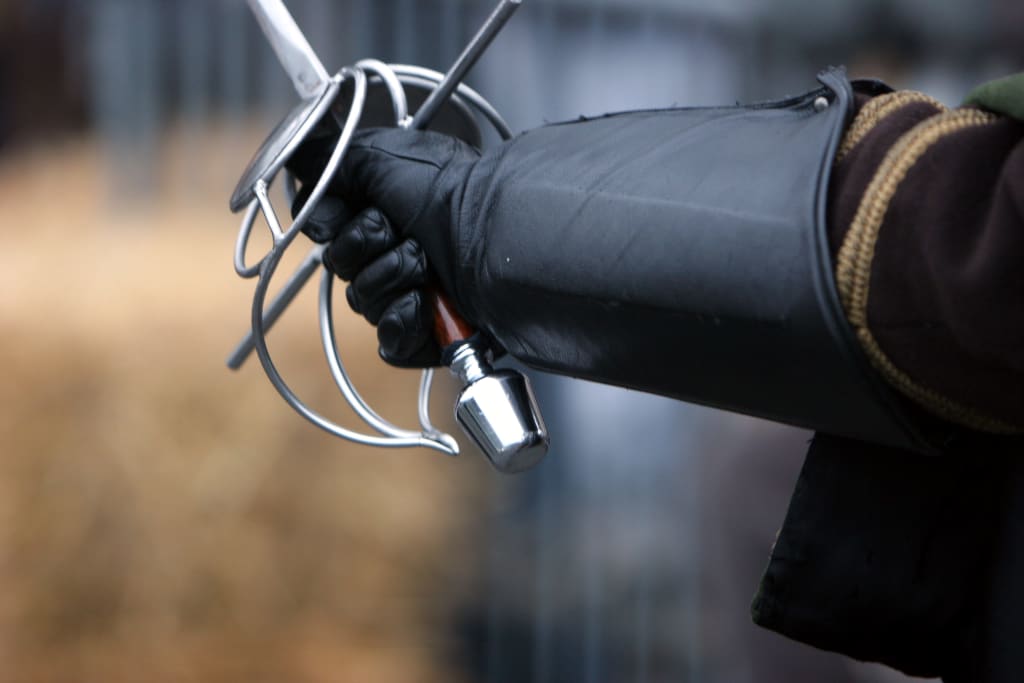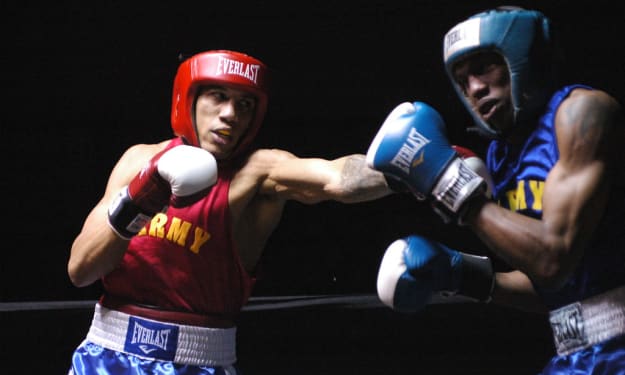What It Really Means To Be a Swashbuckler
The Opposite of What Most of Us Think

A lot of things probably come to mind when you hear the term swashbuckler. For example, most of us picture the flash of steel, the clash of parries, and the witty banter of heroes (or villains) whose skill is so great that even a duel to the death isn't enough to greatly concern them as they advance and retreat across a parapet, or the heaving deck of a ship. You probably also imagine musketeers in their trademark hats, and pirate captains with their swirling coats, all taking on long odds and coming out ahead with nothing more than guts and style as their rapiers flash in blinding strokes and dazzling parries that prove skill is sometimes enough to overcome greater numbers.
I hate to tell you this, but if any of that sounds like what you were thinking then you only know Hollywood's definition of what a swashbuckler is. The actual meaning of the word, and how it was originally coined when swords were still the sidearm of the day, is pretty much the opposite of what it's come to mean in the years since.
If you're interested in more unusual word history and etymology, like What Does "Blood is Thicker Than Water" Really Mean? or What is a Paladin?, then you should take a moment to dig a little deeper in my full Vocal archive!
What You Should Be Imagining Instead

The term swashbuckler first came into common use around the 1550s according to the Online Etymology Dictionary, and it was most definitely not a word you used to give someone a compliment on their skill in a fight. It was a combination of the word swash (which refers to a loud banging noise) and buckler (a commonly used small shield held in one hand or occasionally strapped to the arm).
While that seems pretty straightforward, there were actually two ways the term was generally used, both of which may be equally valid. According to Word Origins, for instance, swashbucklers tended to be loud, abrasive, and boastful of their skill and deadliness with a blade. The combination of the two words "swash" and "buckler" could refer to the act of banging on one's own buckler as a distraction tactic, or it could refer to the idea that a swashbuckler would loudly bang his blows onto his opponent's shield. In this way a swordsman might make up in strength what he lacked in skill, hammering on their opponent to force an opening in their guard. In either case a swashbuckler was generally seen as a braggart, a dirty fighter, and more often than not a bully who used brute force rather than any real mastery of fencing or sword play to win his fights.
This didn't mean they weren't dangerous, of course. It simply meant they were not skilled, which is a completely separate thing.
What Led To The Change?
In a word, Hollywood.
Fencing and swordplay has always been a favorite playground for creators of fiction, from the tales of the Three Musketeers to the dark deeds of Captain Blood. When these classic stories wound up on the silver screen, though, the term swashbuckler was applied to the characters doing all of the fancy swordplay. Whether it was to refer to the arrogance of the heroes (something Errol Flynn cemented into the image of the swashbuckling hero), or simply because it was an easily-remembered buzzword is hard to say at this point in time. Since duels of skill between the hero and the villain were always popular, though, it's likely that the connection between swashbucklers and skilled swordsmen was made during these dramatic fight scenes.
Which is kind of ironic, given that it's quite literally the opposite of what the term originally meant. But that's show business (and the evolution of language) for you!
About the Creator
Neal Litherland
Neal Litherland is an author, freelance blogger, and RPG designer. A regular on the Chicago convention circuit, he works in a variety of genres.
Blog: Improved Initiative and The Literary Mercenary






Comments
There are no comments for this story
Be the first to respond and start the conversation.